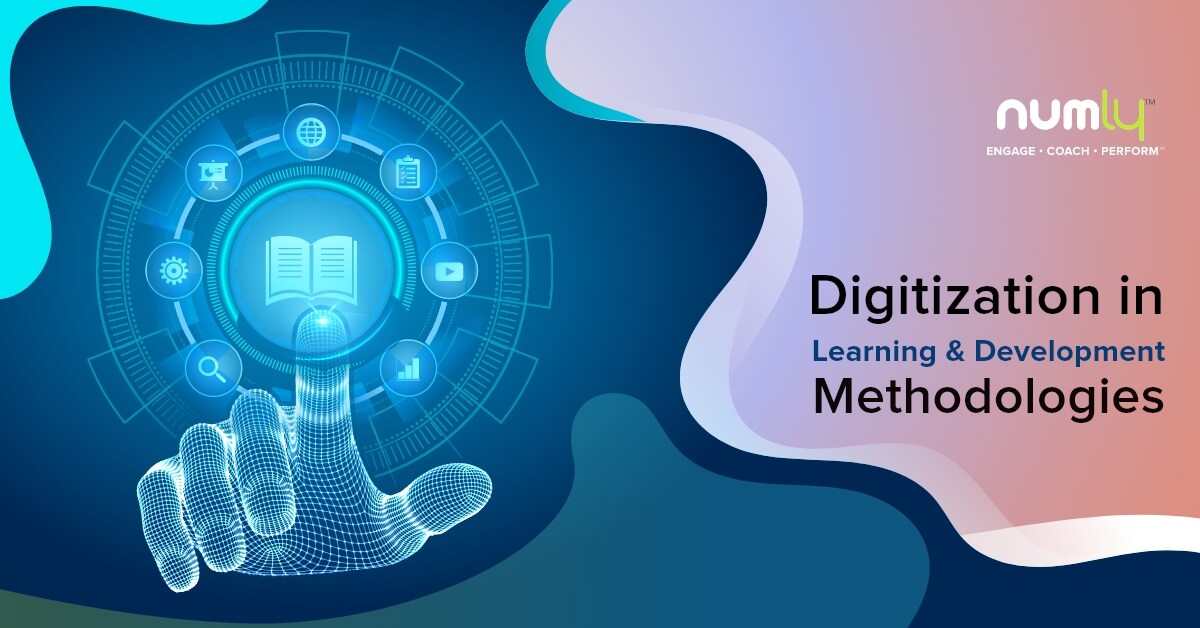The rapid acceleration of digitization in the current work dynamic has increased the demand for distinctive employee skills that align with this significant transformation and help them to stay relevant. The pre-pandemic times saw how emerging technologies had already started to reshape the skills that employees needed to match the AI and automation-centric roles.
As organizations have started to acclimate to the tech-enabled future of work, the one takeaway is that the current workforce that operated in a pre-pandemic environment requires a compilation of new learning capabilities to thrive. An endorsement from the employers for driving digitally-enabled methodologies to make the overall business and employees ‘future-proof’ takes precedence over any compensatory benefits that organizations can offer.
Learning and Development(L&D) methods have become central to how leaders upskill their employees as they are more mindful of this new reality. For one thing, the traditional approaches have not been exactly supportive in the ways that employees have been learning. And these approaches have prevented organizations from being agile and responsive to the evolution in the way we work.
At the very core of digitization in L&D, the categories of learning methods that are focused on delivering relevant learning opportunities are ‘timely’, ‘ideal’, and ‘personalized’. In both group and individual formats, opportunities for employees to interact with the content are created and consumed. This significant step forward has enabled the next-gen workforce to choose their learning paths through automated recommendations.
The learning life cycle encompasses the phases of experimentation, failure, and reflection of the learnings in truly authentic environments – with employees being exposed to exploring opportunities replete with new skills and knowledge. Experimentation in both the learning experience and on the job is the cornerstone of development that makes learning more organic and spontaneous. Though all of these methods are primarily empowered by technology, the onus of instituting the appropriate method lies with the L&D function.
With experiments on course-focused learning playbooks becoming passe, a majority of learning leaders are leaning towards these ‘digitization’ methods to add a whole new dimension to the learning experience:
- Moving away from the unchanging, rote learning paths and leveraging tech-enabled platforms with dynamic learning to achieve more personalization
- Equipping employees with a structure that is dedicated to various formats of learning – collaborative learning, group learning, and peer coaching
- Crafting talent strategy through self-serving and employee-driven learning and development that boosts employees’ digital and cognitive capabilities
- Promote interactive learning to encourage active engagement between the employees and the content (gamification, bots)
Deloitte’s US L&D team launched a project that implemented a system for onboarding employees with a new-age technique – limited formal training and to better processes. Primarily, Deloitte LLC’s shift in learning methods rendered more relevant, contextualized, and useful learning to employees. Their learning assets comprised videos and other content that was more centered on skills instead of the roles, and more aligned with the employee workflows. The shift in learning methods here illustrates how Deloitte went the extra mile to deliver more relevant, meaningful, and contextualized learning to employees, with a special mention about the way it spurred the adoption of new behaviors.
Overall, the propensity towards digitization in all aspects of the working paradigm has pushed organizations into becoming more agile. Therefore, scaling of L&D is predicted as the central obligation of any organization to thrive in this new, digitalized ecosystem and help nurture the pipeline of future leaders.
Aligning Digitization in L&D with Peer Coaching
The Fourth Industrial Revolution paved way for Artificial Intelligence that is being implemented in L&D and is delivered to the organization on a SaaS platform. However, with the digitally-enabled coaching space taking significant precedence in recent years, the efficacy of the erstwhile employee development programs is debatable as there is no perceived long-term impact.
AI-powered coaching with data collection and analysis aims to deliver the desired output for the development of the next-gen workforce. The benefits that it brings through a blend of the high-touch, high-technology approach tend to make AI-powered coaching more focused, productive, scalable, and less capital-intensive.
There is an example of a business services organization that was heavily relationship-centered. Not only was the ‘relationship-oriented’ feature testimony of their culture, but a significant enhancement in their L&D function. What they did was use leaders as both live and virtual coaches – and spared the agony of drowning their employees in a deluge of e-learning courses.
We, at Numly, believe that the evolution of the workforce is essentially through sound investment in personalized learning and skilling solutions that are pivotal to the development potential of every employee. NumlyEngageTM – a SaaS peer coaching solution that enables the employees to coach and learn from each other utilizes an AI-enabled platform that helps organizations gain actionable insights through human connections and program analytics.
Numly believes that when it comes to determining the right learning methods, L&D leaders should develop a life-long learning mindset. The communication of their choice of learning methods to their employees reflects on the overall message that they are trying to convey to the organization. The message ‘We are investing in you. We care about everyone’s learning and development curve’ is going to either propel the organization toward or away from the culture they seek to create.
As we are making the shift toward digitization, it is also important that we reminisce the quote by innovator and entrepreneur Barney Pell – “the human coach experience is still important, but the AI can complement that by making sure that the goals are appropriate and that the suggestions are embedded into their daily lives”. The inference drawn here is that digitization in L&D is being seen as the most integral development in the evolution of coaching.

